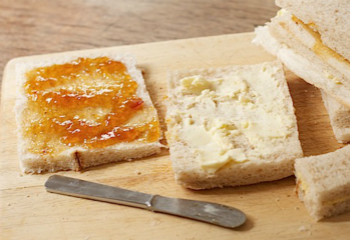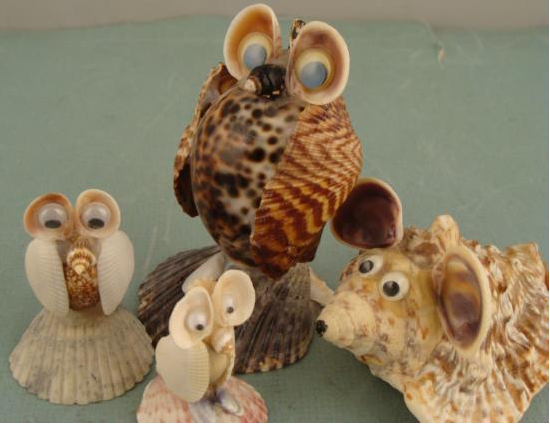- http://www.shanbay.com/footprints/article/2827/
- http://www.shanbay.com/footprints/article/2836/
- http://www.shanbay.com/footprints/article/2851/
- http://www.shanbay.com/footprints/article/2869/
- http://www.shanbay.com/footprints/article/2884/
- http://www.shanbay.com/footprints/article/2893/
- http://www.shanbay.com/footprints/article/2908/
- http://www.shanbay.com/footprints/article/2917/
- http://www.shanbay.com/footprints/article/2932/
- http://www.shanbay.com/footprints/article/2938/
- http://www.shanbay.com/footprints/article/2956/
- http://www.shanbay.com/footprints/article/2968/
- http://www.shanbay.com/footprints/article/2980/
- http://www.shanbay.com/footprints/article/2992/
- http://www.shanbay.com/footprints/article/2992/
- http://www.shanbay.com/footprints/article/3019/
- http://www.shanbay.com/footprints/article/3028/
- http://www.shanbay.com/footprints/article/3037/
- http://www.shanbay.com/footprints/article/3052/
- http://www.shanbay.com/footprints/article/3058/
- http://www.shanbay.com/footprints/article/3088/
- http://www.shanbay.com/footprints/article/3100/
- http://www.shanbay.com/footprints/article/3157/
- http://www.shanbay.com/footprints/article/3163/
- http://www.shanbay.com/footprints/article/3283/
- http://www.shanbay.com/footprints/article/3292/
- http://www.shanbay.com/footprints/article/3307/
- http://www.shanbay.com/footprints/article/3316/
- http://www.shanbay.com/footprints/article/3331/
- http://www.shanbay.com/footprints/article/3352/
- http://www.shanbay.com/footprints/article/3355/
- http://www.shanbay.com/footprints/article/3376/
- http://www.shanbay.com/footprints/article/2827/
- http://www.shanbay.com/footprints/article/2836/
- http://www.shanbay.com/footprints/article/2851/
- http://www.shanbay.com/footprints/article/2869/
- http://www.shanbay.com/footprints/article/2884/
- http://www.shanbay.com/footprints/article/2893/
- http://www.shanbay.com/footprints/article/2908/
- http://www.shanbay.com/footprints/article/2917/
- http://www.shanbay.com/footprints/article/2932/
- http://www.shanbay.com/footprints/article/2938/
- http://www.shanbay.com/footprints/article/2956/
- http://www.shanbay.com/footprints/article/2968/
- http://www.shanbay.com/footprints/article/2980/
- http://www.shanbay.com/footprints/article/2992/
- http://www.shanbay.com/footprints/article/2992/
- http://www.shanbay.com/footprints/article/3019/
- http://www.shanbay.com/footprints/article/3028/
- http://www.shanbay.com/footprints/article/3037/
- http://www.shanbay.com/footprints/article/3052/
- http://www.shanbay.com/footprints/article/3058/
- http://www.shanbay.com/footprints/article/3088/
- http://www.shanbay.com/footprints/article/3100/
- http://www.shanbay.com/footprints/article/3157/
- http://www.shanbay.com/footprints/article/3163/
- http://www.shanbay.com/footprints/article/3283/
- http://www.shanbay.com/footprints/article/3292/
- http://www.shanbay.com/footprints/article/3307/
- http://www.shanbay.com/footprints/article/3316/
- http://www.shanbay.com/footprints/article/3331/
- http://www.shanbay.com/footprints/article/3352/
- http://www.shanbay.com/footprints/article/3355/
- http://www.shanbay.com/footprints/article/3376/
语法教室(第1期):双重属格——谁是谁的谁?
http://www.shanbay.com/footprints/article/2827/
单词若是英语学习的砖石,语法便是将这些零碎的知识粘合成句的泥浆,想必很多人都买过厚可拍墙的语法书,左啃右啃不得而终,况且语法知识细碎难解,换我高中老师常用的话来说就是“你看看哪个读起来顺溜就行了”……因此语法之精要不在背诵,在于理解,尤其在于到处拼拼凑凑,于细碎之中补充自己啃过多遍的系统语法知识,然后在平常的写作和练习中下意识地多问问自己,我这么写符合语法规定吗?慢慢从“死抠”语法的窘境中豁然开朗,做到“出口成章”。
在这档节目中,笔者给大家带来了一些容易混淆的语法小常识。这些你都了解吗?赶快来看看吧~
本期主题:双重属格——谁是谁的谁?

先来一组辨析:
a photo of Jackson's
a photo of Jackson
Jackson's photo
a photo of Jackson
Jackson's photo
这三个表达有什么区别呢?
解决这道题目的关键点在于这么一条语法规律:
当名词中心词为“portrait,picture,printing,photograph,bust”等时,用双重属格来修饰有关人物所收藏的东西,即拥有之物,也可说身外之物;用of属格则指某人自己的东西,本身之物;在没有上下文的情况下,用-’s属格,则能指以上两种意义的任何一种。
这么一来,这道问题就相当简单了,“a photo of Jackson's”是双重属格,有“of(表的)”也有“-’s(表的)”,所以指代拥有之物,即“Jackson所收藏的一张照片”;“a photo of Jackson”是of属格,表示本身之物,即“一张Jackson自己的照片”;最后,“Jackson's photo”则可能为两种意思中的任一种,要结合上下文来进行判断。
再来举一个类似的例子:a condemnation of John's 和 a condemnation of John。
前者为双重属格,表示外物,因此condemnation针对的是外人,所以John是发起者,翻译成“John(对别人)的谴责”,后者是of属格,表本身,所以condemnation针对的是John,因此发起者通常理解为别人,翻译成“(别人对)John的一番谴责”。
你搞清楚了吗?
以上内容主要参考《大学英语语法与词汇》(袁晓宁、刘成)。
语法教室(第2期):“A and B ...”,谓语动词必以复数形式呈现?
通常情况下,大家都会以为“A and B”这样的句型里,谓语动词以复数形式呈现,例子也是信手拈来:
Her behaviour and her principles do not accord well together.
她的行为与她的原则不很一致。
她的行为与她的原则不很一致。
但事实并非如此。

需要注意的是,本文已经排除了大部分有规律可循的“特殊情况”,即:一些可以影响谓语动词单复数的固定词组,如:or,either ... or,as well as,in addition to等,前两个做连接词时,谓语动词与靠近它的主语部分相一致,而后两个则正好相反,与远离它的主语部分相一致,各举一例如下:
Neither you nor he is going to take the exam.
The father, as well as his sons, is going to sign up for the contest.
The father, as well as his sons, is going to sign up for the contest.
这样的词组还有很多,需要大家在平时的学习中积累,在此不做赘述。接下来我们主要来看一下几种“A and B”句型中谓语动词为单数的特殊情况。
1. 如果作主语的并列结构中的名词指同一个人、同一个事物或同一个概念,谓语动词用单数。
如何辨别这两个并列结构是否表达同一个概念呢?关键在于限定词。通常两个名词并列共用同一个限定词时,这两个名词是指同一个事物或概念;如果两个名词分别用限定词来修饰,则指不同的事物或概念。
例如:
The manager and secretary was present at the meeting. 经理兼秘书出席了会议。
The manager and the secretary were present at the meeting. 经理和秘书出席了会议。
The manager and the secretary were present at the meeting. 经理和秘书出席了会议。
现在,如果让你们翻译“习近平,现任中国共产党中央委员会总书记,中共中央军事委员会主席,中华人民共和国主席,中华人民共和国中央军事委员会主席”,你们还敢乱用the吗?

2. 当and连接两个单数名词作主语,且两个名词前分别有each,every,no,many a等限定词修饰,谓语动词用单数。
例如:
Every boy and every girl in this class studies very hard.
这个班上的每个男生和女生学习都很用功。
这个班上的每个男生和女生学习都很用功。
3. 表示加减乘除时,谓语动词用单数。
例如:
Two added to three equals (makes, gives, is) five.
二加三得五。
二加三得五。
最后是今天的问题(答案见下期):
请翻译:Bread and butter is his usual breakfast.

以上就是今天的所有内容啦~
大家还有什么新的想法都可以说出来分享一下哦~
大家还有什么新的想法都可以说出来分享一下哦~
往期语法教室请看:
语法教室(第3期):反身代词,指的到底是谁?
在上一期的《语法教室》中,我们讲到了“A and B”句型中谓语动词的单复数问题,文末给大家留了一道翻译题,答案如下:
原文:Bread and butter is his usual breakfast.
参考翻译:他的日常早餐是面包夹黄油。
参考翻译:他的日常早餐是面包夹黄油。
你翻对了吗?
今天我们要了解的是反身代词,首先来看一道选择题吧~
Various animals have shells that keep themselves from growing beyond a certain size.
A. various
B. themselves
C. beyond
D. certain
B. themselves
C. beyond
D. certain
以上四个选项,哪一个错了呢?

机智的小伙伴会说不用看题目了答案肯定就是B,只有B涉及到了反身代词 =。=
恭喜你答对了=。=
不过原因何在呢?
我们来分析一下这句话,理解的关键在于that从句是用来修饰shells的,而不是animals。按照题中句子的逻辑来看,themselves指代that, 而 that的先行词为shells,句子就变成了:animals have shells that keep shells from growing beyond a certain size(动物的壳是为了防止壳长得太大)?这显然是不对的。因此themselves只能改为them。
知识点1:
反身代词在句中作宾语时,表示动作的对象是动作的执行者本身,换句话说,反身代词在句子中作宾语时,须指代它所在句子的主语,否则就不能用反身代词。
于是乎我们来看今天的第二个题目:
She placed her papers in front of her.
这句话有错误吗?
按照我们刚刚的说法,这里的her确实是指代动作执行者本身的,所以这句话错了,her应当改为herself。是吗?
实则不然。
知识点2:
如果人称代词前面出现了表示空间位置关系的介词或者介词短语时,它的宾语一般不用改成反身代词。大家常见的句子,比如“She closed the door behind her.”,就是个典型的例子。
现在大家明白了吗?
最后,来翻译一组句子吧(答案见下期):
A. He is looking at himself in the mirror.
B. He is looking at him in the mirror.
B. He is looking at him in the mirror.
往期语法教室请看:
在上一期的《语法教室》中,我们讲到了反身代词的指代问题,文末翻译题的参考答案如下:
A.He is looking at himself in the mirror.
他看着镜子里的自己。
B. He is looking at him in the mirror.
他透过镜子窥探他人。
他看着镜子里的自己。
B. He is looking at him in the mirror.
他透过镜子窥探他人。
你翻对了吗?
语法教室(第4期):谁最聪明——比较词后有无“One”?
今天给大家介绍一个相对简单但是非常容易弄错的语法点,也就是比较词后带不带“One”。
首先给大家看一个例句,你们来判断一下这句话的对错:
Of all the students in my class, he is the cleverest one.

这句话读起来好顺口有没有!所以说语感这种东西嘛…… =。= 这句话其实是错的,末尾的one不该存在,应该删除。
知识点:
在“(the)+ 形容词最高级(或副词最高级)+ 比较范围”这种结构中,表示范围的词(of,among,between……)后面不用再加“one”。
而在上文中,例句里有了一个比较范围,“Of all the students in my class”,所以我们一般不在最高级后加名词或代词。如果我们把句子的顺序调整一下,也许能更好地理解这其中的逻辑:He is the cleverest one of all the students in my class。这样看来,这句话是不是很奇怪?“He is the cleverest one”和“one of all the students in my class”单独都能存在,但是放在一起省略掉一个one,就属于杂糅了。
下面注意比较和把握以下两个例句结构的不同导致最高级后名词或代词的有无。
John is the brightest among these workers.
John is the brightest man I have ever met.
John is the brightest man I have ever met.
大家都明白了吗?最后来做一道选择题吧:
He is the brightest ___ of the three boys.
A. /
B. boy
C. one
B. boy
C. one
以上内容主要参考《大学英语语法与词汇》(袁晓宁、刘成)。
No comments:
Post a Comment